‘The Eastern Gates of the Austrian Empire’
In 1772 the city of Brody became part of the Habsburg Monarchy as a border town of the crownland of Galicia and Lodomeria – first with the Commonwealth of Poland and from 1795 with the Russian Empire. The international border was about 6 km east of the city.
In 1779 Emperor of Austria Joseph II granted Brody the status of a “free city.” This meant that all goods that passed through the territory of the town were free from customs. Subsequently, large batches of goods from Russia, Turkey, the Austrian and German lands, and Great Britain began to pass through Brody.
By the first half of the 19th century, Brody became the second most important town in Galicia, and by the second half of the century, it was the largest trading center in the Austro-Hungarian Empire.
Not surprisingly, Brody took on such nicknames as the “Eastern Gates of the Austrian Empire,” the “Warehouse of the East and West,” and the “Trieste on the Continent” (Trieste was a free port city of the empire).
Brody was not only an important official, but also non-official border crossing point between Austria and Russia, especially thanks to its ties with the neighboring town of Radyvyliv (Rus: Radivilov; Pol: Radziwiłłów). “Time and again Brody was a place of refuge for persecuted Poles and Jews from czarist Russia but also one for deserters and smugglers. Brody continued to be known for its border traffic, both legal and illegal, even during the period of decline in population and steady economic downfall,” (lvivcenter.org).
In 1879 Brody lost its status of a “free city” and its importance as a center of trade began to decline. In 1918 the Austro-Russian border ceased to exist. After WWI, the town and the surrounding areas became part of the Second Polish Republic.
The Brody Border as Depicted on Postcards
The postcards below depict what the border crossing between the Austro-Hungarian and Russian empires looked like at the beginning of the twentieth century from the side of Brody toward the town of Radyvyliv.
Two large wooden barriers blocked the road connecting the empires. In some of the images customs buildings can be seen on either side of the barriers. In other images, the buildings are not visible – this could mean that there were more than one border crossings near Brody, or it could be because some of the images were “photoshopped” – photomontage was popular at the time.
The postcards were produced by various publishers and printed in various languages, most commonly in Polish and German (often together), but also in Ukrainian and Russian. The use of language depended on the publisher and the time period. For more about language usage on postcards of Brody, see here.
Brody. Granica rosyjska – Russiche Grenze. (Russian Border)
In the middle stands a Russian customs officer, to the right Austrian ones.

Brody – Granica rosejska – Russische Grenze (Russian Border)

Brody. Granica rosyjska – Russiche Grenze. (Russian Border)
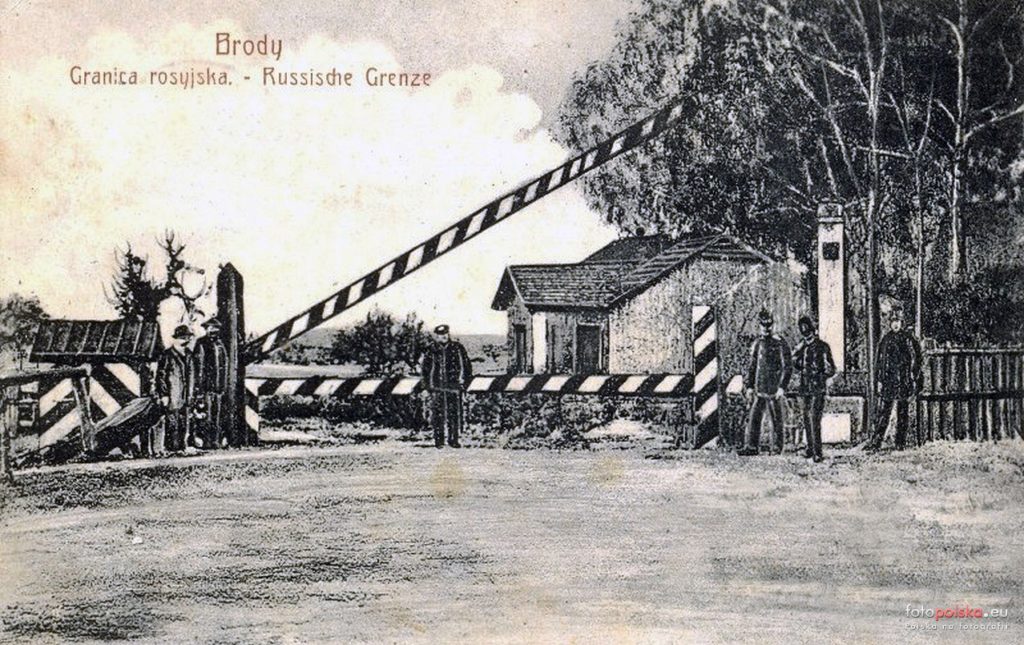
Brody – Granica (Border)
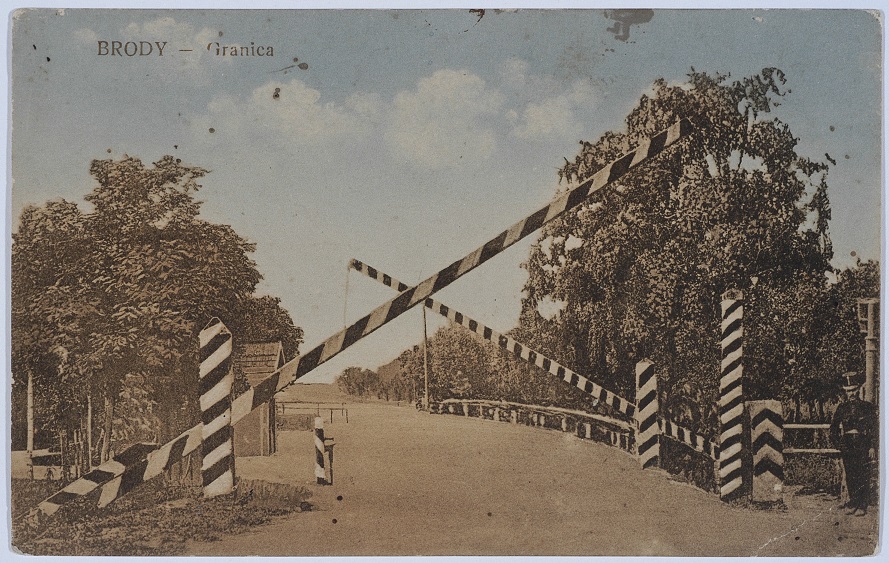
Brody. Austryacka granica do Rossyi – Oesterreichische Grenze nach Russland (Austrian Border to Russia)
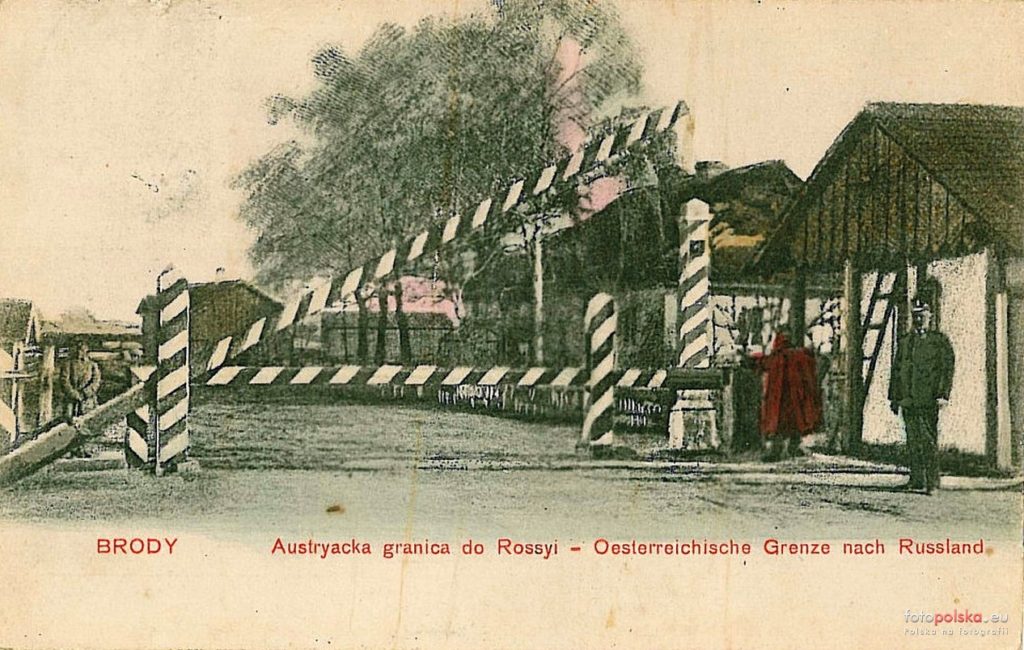
Brody. Austryacka granica do Rossyi. Oesterreichische Grenze nach Russland (Austrian border to Russia)
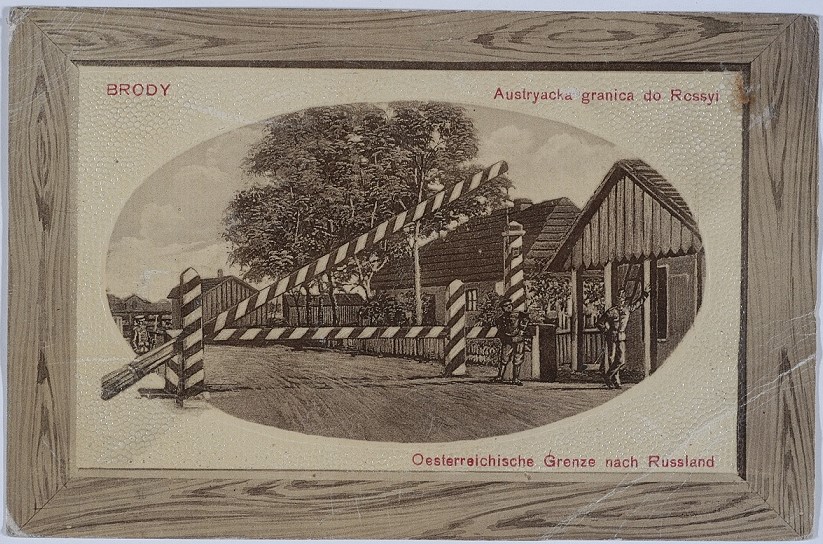
Brody. Granica – Границя – Grenze (Border)
This postcard resembles a photomontage. At first glance, it looks very similar to the next two postcards below, but first of all this one has a dog in the foreground, and second of all, some of the positions of the people are different: the man sitting on the barrier on the left is facing backward in the first image and frontward in the second two, the two women on the right seem to be leaning on one another in the first one, while in the second two they are both standing upright.
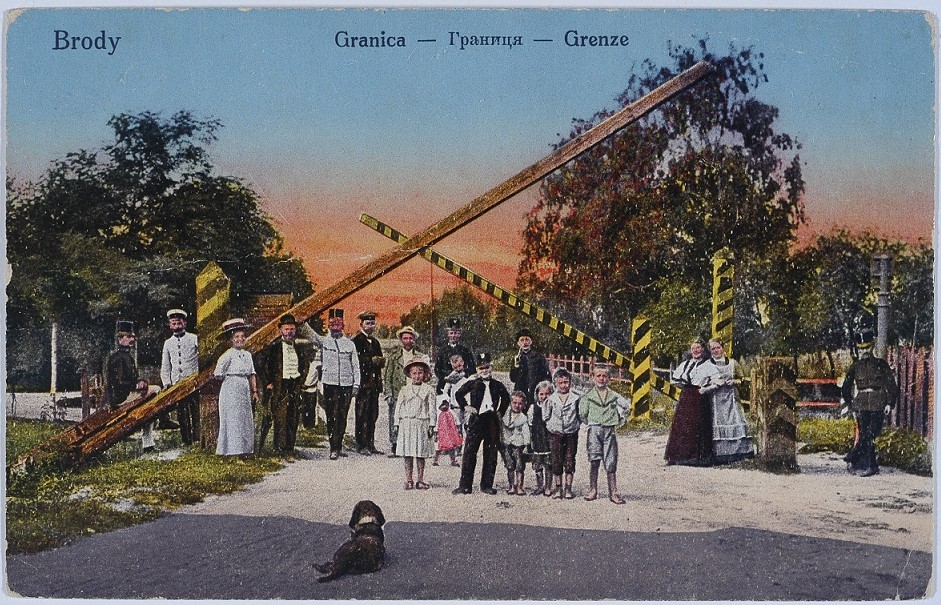
Brody. Granica – Grenze
БРОДЫ Граница. BRODY Granica. (Border)
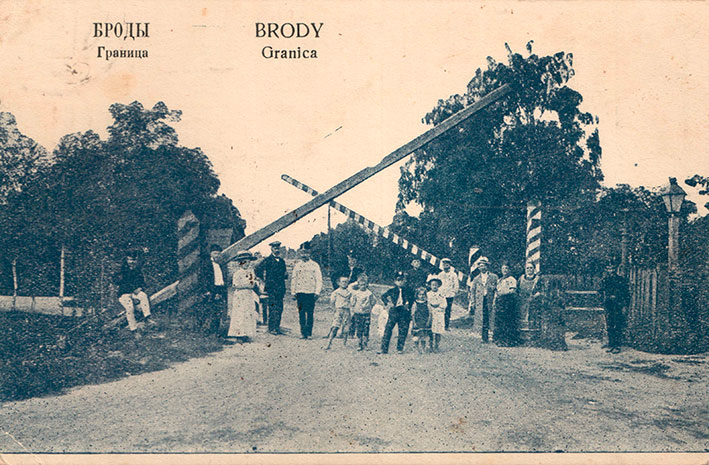
Graniza – Grenze. Brody – Radziwiłłów
Dom exportowy Herbat Rosyjskich. Russisches Thee-Exporthaus (Russian Tea Export House); Herbata od Adamowicza (Tea from Adamowicz); Rosyjska straż graniczna. Russische Grenzwache (Russian Border Guard)

By Areta Kovalska
Sources:
http://shtetlroutes.eu/en/brodi-putvnik/
http://www.lvivcenter.org/uk/uid/picture/?pictureid=3290
https://www.lvivcenter.org/en/conferences/seminars/169-09-03-31-brries-kuzmany-presentation/
See also:

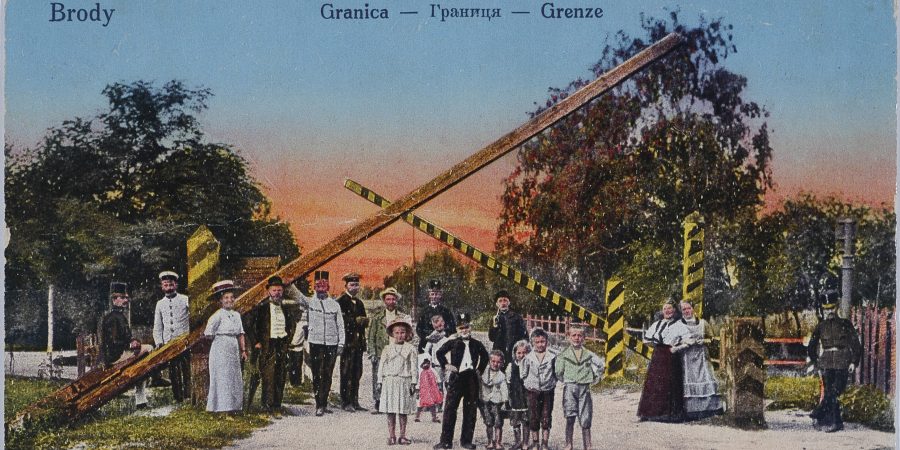
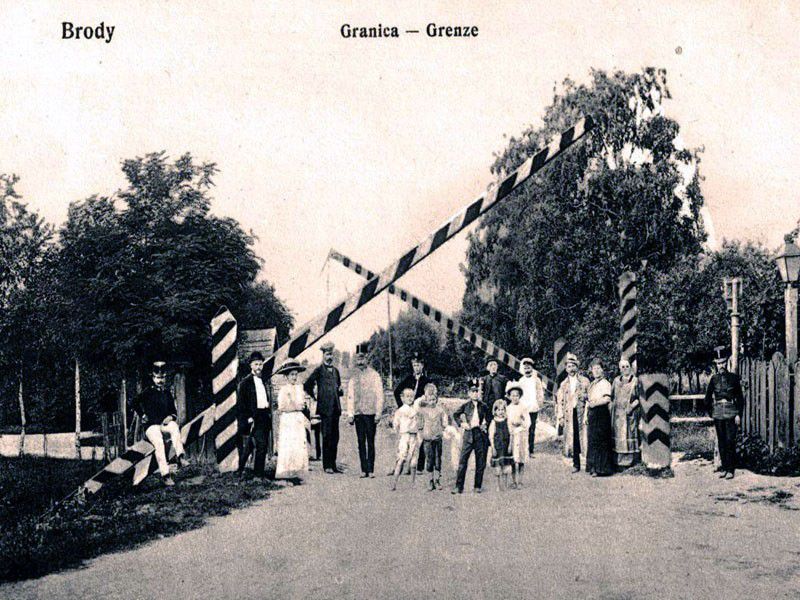




Dobrý den,ve městě BRODY byli nebo možná ještě jsou naši příbuzenstvo ,dědův tatínek se tam narodil jmenoval se JAN ROMANOW 1819 se narodil a už nic víc nevíme , za nějaké info budeme rádi .Děkujeme
Thank for the great images and pictures… I have written an essay about Brody during the Holocaust (Italian). Antonella Tiburzi, Un mondo estinto. La comunità ebraica di Brody e il suo destino (1941-1945), Ombre corte publisher, 2020. (https://www.ombrecorte.it/index.php/prodotto/un-mondo-estinto/)